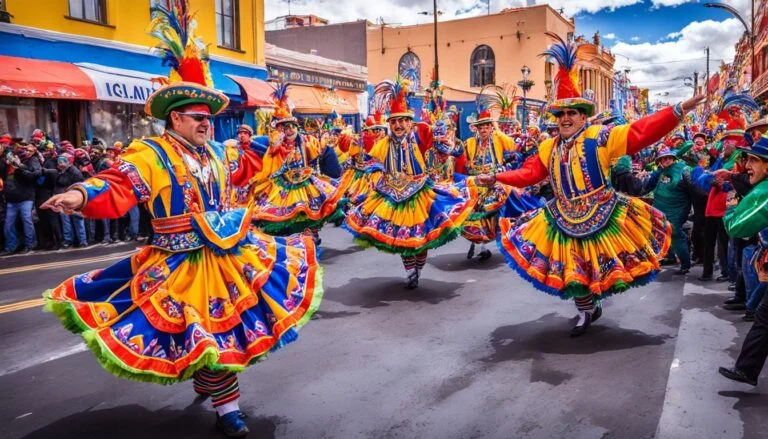Step into the Clouds: Unveiling the Mysteries of Machu Picchu
Are you ready to embark on an extraordinary journey through time and immerse yourself in the mysteries of Machu Picchu? Nestled in the heart of the Andes Mountains in Peru, this ancient Inca citadel has captured the imaginations of adventurers and history enthusiasts alike. But what secrets lie within its walls? What stories does it hold? Join us as we uncover the enigmatic wonders of Machu Picchu and delve into its intriguing past.
Key Takeaways:
- Discover the ancient Inca ruins of Machu Picchu, a UNESCO World Heritage Site.
- Explore the breathtaking architecture and natural landscapes that make Machu Picchu a truly awe-inspiring destination.
- Unravel the mysteries behind the purpose and significance of Machu Picchu.
- Learn about the advanced engineering techniques employed by the Incas in the construction of this magnificent citadel.
- Gain insight into the ongoing preservation efforts and restoration projects aimed at safeguarding the legacy of Machu Picchu.
The Enchanting Journey of the Machu Picchu Circuit 4
The Machu Picchu Circuit 4 offers a mesmerizing adventure through ancient history and breathtaking landscapes. This immersive route takes visitors on a captivating exploration of the renowned Inca ruins, revealing hidden corners and iconic landmarks along the way.
As you embark on this enchanting journey, you’ll follow stone pathways that have stood the test of time, winding through terraced slopes that showcase the ingenuity of Incan engineering. Each step uncovers the secrets of Machu Picchu, allowing you to immerse yourself in its rich ancient history.
One of the highlights of the circuit is the Temple of the Sun, an awe-inspiring structure that reveals the intricate architectural prowess of the Incas. This sacred site was dedicated to the sun god Inti and is a testament to the spiritual significance of Machu Picchu.
Another must-visit landmark on the circuit is the Intihuatana Stone, a mesmerizing astronomical observatory. This carved stone pillar aligns with celestial events and attests to the Incas’ advanced understanding of astronomy.
However, the Machu Picchu Circuit 4 is not just about the ancient ruins. It offers hikers an opportunity to immerse themselves in truly breathtaking landscapes. The route winds through lush cloud forests, where vibrant flora and fauna grace your surroundings.
Marvel at the cascading waterfalls that punctuate the landscape, their invigorating presence adding to the allure of the journey. And as you ascend higher, be prepared to be mesmerized by panoramic mountain vistas that stretch as far as the eye can see.
The Machu Picchu Circuit 4 is an unforgettable experience that combines historic exploration with awe-inspiring nature. Whether you’re a history enthusiast or an adventure seeker, this journey will leave you with memories that last a lifetime, as you unravel the mysteries of this ancient wonder and immerse yourself in its breathtaking landscapes.
Unraveling the Secrets of Machu Picchu: A Virtual Journey through Time

Machu Picchu, an ancient citadel nestled in the Andes Mountains of Peru, was constructed during the height of the Inca Empire in the 15th century. This remarkable archaeological site continues to mystify historians and archaeologists, as its purpose remains shrouded in speculation. Theories range from it being a royal estate to a sacred religious site, but the true intention behind its construction has yet to be definitively revealed.
The journey to Machu Picchu typically begins in Cusco, the ancient capital of the Inca Empire, where travelers can embark on the renowned Inca Trail. This four-day trek offers adventurers a chance to immerse themselves in the breathtaking landscapes and diverse ecosystems of the region. Alternatively, visitors can opt for a train ride from Cusco to Aguas Calientes, a small town located at the base of Machu Picchu.
Once at Machu Picchu, visitors are greeted by a mesmerizing display of Incan engineering. Intricate structures, plazas, and terraces sprawl across the mountaintop, showcasing the ingenuity and craftsmanship of the ancient civilization. The precise stone masonry, offering a glimpse into the architectural prowess of the Incas, is a testament to their advanced building techniques.
Historical Background
The Inca Empire, which stretched along the western coast of South America, was a highly advanced civilization known for its architectural achievements and extensive road network. Machu Picchu served as a testament to their mastery of construction and engineering.
At Machu Picchu, visitors can explore the Temple of the Sun, the Intihuatana Stone, and numerous other awe-inspiring structures. The Temple of the Sun, with its precisely aligned windows and astronomical significance, hints at a potential religious function. The Intihuatana Stone, often referred to as the “Hitching Post of the Sun,” is believed to have played a role in the Inca’s astronomical observations.
The captivating terraces found throughout Machu Picchu served both practical and symbolic purposes for the Incas. These agricultural terraces were constructed with meticulous precision, allowing the Incas to cultivate crops in the mountainous landscape. The terraces also symbolized the harmony between the natural and spiritual worlds, embodying the Incas’ deep reverence for the land.
The Mystery Endures
Despite extensive research and exploration, the true purpose of Machu Picchu continues to elude scholars. Theories persist, each offering a unique perspective on the ancient citadel’s significance. Some suggest it was a retreat for Incan royalty, while others propose it was a center for religious ceremonies and rituals. As we continue to unravel its secrets, the allure and intrigue surrounding Machu Picchu only intensify, captivating travelers and historians alike.
The Secrets and Mysteries of Machu Picchu

Machu Picchu, the legendary Incan citadel nestled in the Andes Mountains of Peru, is a testament to ancient Incan engineering and architectural brilliance. This UNESCO World Heritage Site is renowned for its awe-inspiring mysteries and intriguing celestial alignments.
One of the most fascinating aspects of Machu Picchu’s architecture is the extensive use of polygonal masonry. The Incas perfected the art of fitting irregularly shaped stones together without using mortar, creating incredibly sturdy structures that have withstood the test of time. The precision and skill required for this ancient construction technique is a testament to the Incan civilization’s mastery of engineering principles.
The Intihuatana stone, a prominent feature of Machu Picchu, is believed to have served as an astronomical observatory. This enigmatic stone pillar was carefully aligned with celestial events, such as solstices and equinoxes, allowing the Incas to track the changing seasons and celestial movements. The accuracy of these alignments showcases the Incas’ advanced understanding of celestial events and their significance in relation to their agricultural practices.
The agricultural terraces carved into the mountainside of Machu Picchu are another remarkable feat of Incan engineering. These meticulously constructed terraces not only provided flat surfaces for cultivation but also served as an effective drainage system to prevent erosion. The terraces allowed the Incas to cultivate crops at various altitudes, creating microclimates suitable for a wide range of agricultural practices.
The purpose of Machu Picchu remains a subject of debate and speculation among historians and archaeologists. While some believe that it served as a royal retreat for Inca nobility, others suggest that it was a significant center for agricultural research and experimentation. Another theory proposes that Machu Picchu had a sacred astronomical function, aligning with celestial events and serving as an important religious site.
The secrets and mysteries of Machu Picchu continue to fascinate and intrigue visitors from around the world. Exploring its ancient Incan engineering, celestial alignments, and agricultural terraces is an awe-inspiring journey that offers a glimpse into the ingenuity and sophistication of the Incan civilization.
Preserving the Legacy of Machu Picchu

Machu Picchu, an ancient Inca citadel nestled in the Andes Mountains of Peru, has long been a captivating destination for travelers worldwide. However, the increasing number of visitors in recent years has posed challenges to the preservation of this historical site. To ensure its longevity, the Peruvian government has implemented various measures to protect and conserve Machu Picchu.
One of the significant efforts is the limitation of daily visitor numbers. By controlling the influx of tourists, the authorities aim to mitigate the impact of foot traffic on the delicate structures and natural environment of Machu Picchu. This approach allows for a more sustainable tourism experience while preserving the site’s cultural and historical value.
Furthermore, sustainable tourism practices have been actively promoted to minimize environmental impact. Visitors are encouraged to follow responsible travel guidelines, such as staying on designated paths, refraining from littering, and respecting the rules and regulations set forth by park authorities. These collective efforts contribute to the long-term preservation of Machu Picchu’s unique ecosystem and cultural heritage.
Ongoing research projects and restoration initiatives also play a vital role in safeguarding the iconic site. Through archaeological studies and scientific investigations, experts continue to unravel the mysteries of Machu Picchu, deepening our understanding of its history and significance. Restoration projects focus on preserving the ancient structures and infrastructure, ensuring that future generations can experience the awe-inspiring beauty of this UNESCO World Heritage Site.
Preserving Machu Picchu is not just about protecting a historical landmark; it is about honoring the legacy of the Inca civilization and the story it tells. As responsible visitors, we have the power to support sustainable tourism practices and contribute to the ongoing efforts of preservation.
The Ongoing Restoration Projects at Machu Picchu
| Restoration Project | Description |
|---|---|
| Inca Trail Rehabilitation | A project aimed at preserving and maintaining the ancient trail system leading to Machu Picchu. This includes repairing stone pathways, reinforcing bridges, and implementing erosion control measures. |
| Structural Stabilization | The preservation of the citadel’s buildings and structures through the use of modern techniques and materials. This project ensures the stability and integrity of key architectural elements. |
| Vegetation Control | An effort to manage and maintain the vegetation within Machu Picchu to prevent damage to the structures. This involves selective pruning and removal of invasive plant species. |
| Water Management | A project focused on optimizing the drainage and water control systems within the citadel. This helps prevent erosion and water-related damage to the stone structures. |
These ongoing restoration projects, combined with sustainable tourism practices, form a comprehensive approach to preserving the legacy of Machu Picchu. By respecting the site’s historical and natural significance and supporting the preservation efforts, we can ensure that future generations can continue to marvel at the wonders of this ancient citadel.
Conclusion
Machu Picchu, an ancient wonder nestled in the heart of the Andes Mountains, is a testament to the ingenuity and mastery of the Incan civilization. With its intricate architecture, breathtaking natural landscapes, and captivating history, this UNESCO World Heritage Site continues to draw visitors from around the globe.
Exploring the mysteries and secrets of Machu Picchu provides a fascinating glimpse into the past and the enduring legacy of the ancient Incans. Whether you choose to embark on the challenging Inca Trail or opt for a train journey to the citadel, the experience of standing in the presence of this ancient wonder is truly magical.
As you traverse the stone pathways and marvel at the celestial alignment of the Intihuatana stone, you can’t help but be awestruck by the advanced engineering skills of the Incas. The agricultural terraces, built with precision and purpose, speak to their ingenuity and resourcefulness.
Machu Picchu stands as a living testament to the thriving Incan civilization and its remarkable achievements. This ancient wonder continues to capture the hearts and imaginations of travelers, preserving the legacy of the Incans for generations to come.







